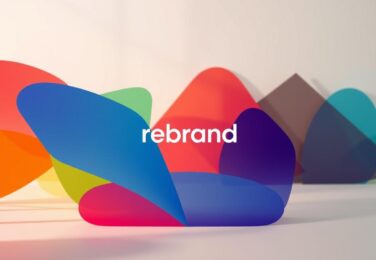The Future of Branding: Trends to Watch in 2030

Table of Content
We recall a client saying their brand felt outdated. They were quick, reliable, and trustworthy but didn’t meet today’s fast pace. This conversation stuck with us as AI for Branding became essential.
In Australia, marketing teams and agencies are pushing for quicker creative, more personalisation, and better governance. New tech like large language models and generative systems is changing branding. AI is now a key tool in shaping branding’s future.
Local rules matter a lot. The Privacy Act 1988 and ACCC guidelines dictate how brands use data here. People want real and sustainable brands, like Aesop and Canva. Businesses are using global platforms and local vendors to meet these needs.
This article will show how AI for Branding will change strategy, creativity, governance, and measurement by 2030. We’ll discuss creative automation, AI-generated content, naming, ethics, and IP, immersive stories, voice AI, and data-driven strategies. Our goal is to help businesses with digital solutions, handling the technical side with you.
Key Takeaways
- AI for Branding is speeding up creative and personalisation for Australian brands.
- Regulations like the Privacy Act 1988 and ACCC guidelines will guide AI use responsibly.
- By 2030, AI will be key in naming, voice design, and immersive brand experiences.
- It’s vital to balance AI with human strategy to keep brands authentic.
- If you’re finding it hard to customise your brand, reach out to hello@defyn.com.au for expert help.
How branding has evolved this decade: a quick overview
We’ve seen big changes in branding over the 2020s. These changes are all about meeting customer needs, moving fast online, and being open to feedback. Every business leader needs to understand these shifts before using AI for branding.
Shifts from product-centric to purpose-driven branding
Brands used to focus on what they offered. Now, they focus on what they stand for. People want to support brands that share their values.
Being purpose-driven means your mission and actions are key. This affects how you talk, who you partner with, and where you source. When choosing AI tools, we look for ones that respect your brand’s values.
Rise of digital-first identities and customer experience
The pandemic made digital channels even more important. Businesses worked hard to create a seamless experience online. Brands with a strong digital identity kept customers coming back.
Now, customer experience shapes how brands decide what to do. We use data from UX to make decisions, not just marketing guesses. AI can help to avoid making branding mistakes faster, but it must fit with customer experience.
Regulatory and social influences shaping brand behaviour in Australia
In Australia, rules like the Privacy Act and ACCC oversight guide brands. They must be open about their impact and avoid making false claims. This affects how we use AI in branding.
For business owners, it’s clear: AI must support your brand’s purpose, customer experience, and follow the rules. It’s not just about technology; it’s about being responsible and true to your values.
AI for Branding: transforming how brands are created and managed
We’re seeing big changes in how brands are made and managed. AI for Branding makes creating ideas and designs faster. It helps teams from agencies to in-house marketing work more efficiently.
How does creative automation change workflows?
- Generative design platforms create many versions of layouts, logos, and social posts quickly.
- Automated style guides keep typography, spacing, and tone consistent across all channels.
- Template engines make A/B tests and localisation easier with less manual work.
What can ai generated branding produce today?
- Logos, colour palettes, and typography suggestions from image models and recommender systems.
- Audio identities and voice prototypes for digital assistants using synthetic voice tools.
- Batch asset export for web, print, and social, speeding up brand asset generation.
How do we balance machine suggestions with human strategy?
- AI ideation: generate lots of options quickly with creative automation.
- Human curation: apply brand strategy, context, and cultural judgement.
- Legal and cultural checks: perform trademark and market reviews before launch.
- Refinement loops: iterate between algorithmic drafts and expert edits.
What practical steps should teams adopt?
- Set clear checkpoints and role responsibilities in the creative review loop.
- Use pilot campaigns to validate ai generated branding against customer perception.
- Document decisions so brand asset generation stays aligned with purpose and compliance.
| Stage | Tooling | Team Responsibility | Key Risk |
|---|---|---|---|
| Ideation | Generative image and copy models | Designers and marketers | Volume of low-relevance ideas |
| Selection | Automated styleguide engines | Brand strategists | Misalignment with brand purpose |
| Validation | Localisation and testing platforms | Legal and market teams | Cultural or trademark issues |
| Production | Template systems and asset exporters | Content ops | Inconsistent executions at scale |
Personalisation at scale: tailoring brand experiences
We think brands do best when they offer experiences that feel personal to many people. This is done by using data, creative design, and rules to make journeys across different channels. When done right, it boosts engagement, sales, and customer loyalty while keeping trust high.
Hyper-personalisation uses smart models and groups people based on their actions. We look at what they click, buy, and do online to find small groups. This way, messages can be made to fit exactly what each person wants and needs, at the right time.
Brands like Commonwealth Bank and Qantas have seen big wins by using these targeted journeys. They’ve become more relevant and made more money.
What dynamic elements make experiences adaptive?
Dynamic elements change things like logos, headlines, and offers based on where you are, what device you use, or what you’ve done before. AI can change images, calls to action, or show you special products on a website. These small changes make a big difference in how meaningful and consistent the experience feels.
What legal and ethical checks must we run in Australia?
In Australia, we must be clear and only use personal data for a good reason. We track where data goes, explain how we got it, and only collect what we need. When sharing data across borders, we have to be extra careful.
Here are some steps we suggest:
- Track how data moves from collection to use and how long it’s kept.
- Update privacy notices to explain how we use automated profiling and choices.
- Use platforms for managing consent and letting people opt out in detail.
- Make data anonymous or use fake data where we can to lower risks.
- Keep records of when we profile people and update our models.
We aim for results that are clear and follow strict rules. This way, we can make personalisation big while keeping customers and the brand safe in Australia.
AI generated branding and the ethics of creativity
AI is changing how brands are made. Agencies using AI branding raise questions about ownership, trust, and responsibility. We need to balance speed and scale with clear rules to protect everyone involved.
Who owns a logo or campaign made with AI? Australian law says humans own the work. We tell teams to document human decisions, get licences for data, and include IP clauses in contracts.
How do we keep authenticity with AI content? Consumers want honesty. Telling them about AI use keeps trust and avoids backlash.
What rules should agencies follow for responsible creativity? We suggest simple policies that fit into their workflows.
- Provenance tracking: log data sources, models used and human edits for each asset.
- Bias testing: run checks on gender, ethnicity and cultural representation before launch.
- Human-in-the-loop sign-off: require a named reviewer to approve public-facing material.
- Clear attributions: state when generative systems contributed to deliverables.
- Regular audits: review model outputs and licences across projects every quarter.
Practical steps make these policies work. Update briefs and contracts to cover AI. Keep simple logs and explain AI use in everyday language.
We have a checklist for teams to follow. It connects AI ethics with legal and creative controls. This keeps brands credible while exploring new possibilities.
| Area | Action | Benefit |
|---|---|---|
| Ownership | Contract clauses defining contributor roles and IP for AI assets | Avoids disputes and clarifies rights for clients and agencies |
| Transparency | Client and consumer disclosure of ai generated branding use | Maintains authenticity and builds consumer trust |
| Bias & safety | Regular bias tests and cultural reviews on generated content | Reduces reputational risk and improves inclusiveness |
| Governance | Human-in-the-loop review with provenance logs | Ensures quality control and legal traceability |
| Compliance | Audit of data licences and privacy checks aligned to Australian law | Limits legal exposure and strengthens due diligence |
Brand storytelling in an immersive metaverse
We look at how brands can create engaging stories in VR, AR, and mixed reality. The design, pace, and how users interact shape the story. AI helps make assets faster and tailor stories to each user, keeping them fresh and creative.
Our focus is on spatial storytelling. This means placing important elements where users look and move. Small cues guide their attention, and clear choices let them influence the story. Design, UX, and content teams must work together to create seamless experiences.
What product opportunities appear in these spaces?
Interactive experiences let customers try before they buy. For example, virtual try-ons in fashion and AR overlays for packaging can reduce friction. Australian brands can test these ideas in small ways to see how they work.
How do we measure success in immersive contexts?
Traditional web metrics don’t capture the depth of immersive experiences. New metrics include time spent, interaction depth, and pathway conversions. AI helps analyse these to understand how users engage. Privacy and identity resolution are also important to consider.
What practical steps should teams take?
- Run small pilots to test narrative structure and tech choices.
- Instrument experiences for measurable signals like interaction depth.
- Use ai for branding services in sydney to generate variants, then refine with human review.
- Integrate learnings into omnichannel plans so metaverse branding supports broader goals.
| Focus area | Key metric | Typical toolset | Immediate action |
|---|---|---|---|
| Design & narrative | Interaction depth | Unity, Unreal Engine, spatial audio | Create story beats and choice nodes |
| Product demos | Try-on to purchase rate | ARKit, ARCore, WebXR | Build a lightweight AR pilot for key SKU |
| Attribution | Pathway conversion | AI analytics, server-side event tracking | Instrument touchpoints and map journeys |
| Privacy & identity | Consent compliance | Consent managers, hashed identity graphs | Design consent flows and data minimisation |
Sustainability and purpose as brand differentiators
More people want brands that really care about the planet. They look for actions that match words. AI helps by checking if brands are true to their claims.

How do companies make purpose a part of their daily choices?
- Set clear goals for reducing waste and emissions.
- Get third-party checks like Carbon Neutral or B Corp to back up claims.
- Share progress with specific KPIs and audited data, not just words.
What makes a brand’s words believable?
- Show real impact with solid numbers and evidence.
- Avoid vague words that might raise red flags.
- Use stories and facts together to avoid being called out for greenwashing.
Can you give us some Aussie brand examples?
- Patagonia in Australia offers repair services and clear supply chains.
- Certified food producers share where their ingredients come from and test them.
- Indigenous-led businesses focus on community benefits in their work.
How can AI help without losing the human touch?
- AI can help track materials and spot issues in supplier data.
- It can predict when brands can meet their green goals and track progress.
- But, humans should review AI findings, create messages, and approve what’s shared.
Here are some steps we suggest:
- Check how things are done and share starting points.
- Use AI for clear supply chains and carbon footprint models.
- Get certified and link stories to facts.
- Train marketing and legal teams to spot and stop greenwashing.
AI generated company names: faster ideation, new challenges
Naming tools based on machine learning are speeding up brand ideation for startups and big firms. These tools help teams explore thousands of options in just minutes. This makes ai generated company names a quick start in creative sprints.
Using AI for branding brings fast variety, pattern recognition, and new combinations. But, there’s a risk of names that echo existing marks or miss local meaning. We see AI as a first filter, not the final choice.
How should businesses in Australia manage legal and cultural gaps?
- Run IP Australia trademark searches early to spot conflicts.
- Check domain availability, noting .com.au rules that often require an ABN or trademark for registration.
- Conduct cultural vetting, including consultation with Indigenous cultural advisors when names touch local languages or meanings.
We suggest a workflow that blends AI speed with human insight. Start with AI ideas, then narrow them down. Apply legal and cultural checks. Keep records to support trademark filings and defend brand choices.
Which practical steps save time and cost?
- Generate a broad list using multiple ai for branding tools.
- Filter by phonetics, memorability and market fit.
- Run trademark checks Australia and domain searches in parallel.
- Ask legal counsel to perform clearance searches and register promising marks.
- Document human authorship and rationale to strengthen applications.
Below we compare common outcomes when relying solely on AI versus a hybrid workflow.
| Aspect | AI-only | Hybrid (AI + Human) |
|---|---|---|
| Speed | Generates hundreds of options in minutes | Fast ideation with deliberate shortlisting |
| Legal risk | Higher chance of collision without trademark checks Australia | Lower risk due to early IP Australia searches and counsel review |
| Cultural fit | May miss local idioms or sensitive meanings | Includes cultural vetting and Indigenous advice when relevant |
| Creativity | Surfaces novel combinations and unusual blends | Combines AI novelty with human refinement for market fit |
| Traceability | Often lacks documented human rationale | Maintains records supporting naming with AI and subsequent filings |
Data-driven brand strategy and predictive analytics
We use data to make decisions that work every time. A strong data-driven brand strategy combines customer insights, business goals, and clear targets. This way, teams can test ideas and grow successful ones. Predictive analytics helps brands know where to invest and avoid risks.
Predictive models use machine learning to predict customer behaviour. They forecast how likely customers are to stay, spend more, and buy. This information guides how to keep customers, where to spend on ads, and what creative content to use.
Real-time optimisation is about making changes as they happen. Streaming data and decision engines create offers, adjust prices, and personalise content instantly. This quick feedback loop links marketing actions to results, speeding up learning across teams.
Which tools are gaining traction in Australia?
- Adobe Experience Cloud for experience orchestration and audience activation.
- Google Marketing Platform for unified measurement and campaign management.
- Braze for cross-channel customer engagement and messaging personalisation.
- Segment for clean customer profiles feeding models and experiments.
- Local analytics consultancies that build custom models on AWS, Azure or Google Cloud.
How should teams implement this work? Begin with clear goals and high-quality data. Ensure data governance, define success metrics, and measure improvements with controlled tests. We combine standard tools with custom predictive analytics for unique market needs.
What about ai for branding and brand optimisation Australia? AI is a tool to enhance decision-making. It suggests actions, ranks opportunities, and automates routine tasks. This approach protects the brand’s value while boosting performance.
Voice, audio branding and conversational AI
We create audio identities that make brands easy to spot. A good voice identity comes from the right sounds, tone, and rhythm. These elements help keep the brand’s voice consistent everywhere.

What makes an audio brand stand out? We focus on character traits, script types, and backup plans. We also adjust synthetic voices to sound like they’re from Australia. This mix of audio branding and AI is key.
How do voice assistants change the customer journey?
They turn simple searches into longer chats. We design these chats to understand what the customer wants, fall back when needed, and hand over to humans smoothly. We track how well these chats work, how often they need human help, and how happy customers are. It’s important to test these chats fully to make sure they work well together.
How do we ensure inclusion and accessibility?
- Test voice scripts with different users to catch various accents and speech styles.
- Make sure there are rules for using voice cloning and keeping voice data safe.
- Make sure prompts are clear, speech can be adjusted, and captions are available when needed.
What practical steps should teams take?
- Write a brief for the voice identity that includes sounds, character, and sample scripts.
- Use synthetic voices to build prototypes and test them with real users.
- Set rules for handling audio branding assets and getting consent for voice cloning.
- Use task-based KPIs to measure success and improve based on real use.
We mix creativity with technical know-how to make conversational AI reliable for brand experiences. This way, voice branding brings out the brand’s personality and delivers real results.
Brand governance in an AI-first world
We’ve set up a clear framework to keep brands safe as AI tools become common. Good rules help make creative work quicker and safer. They guide what’s allowed, who needs to approve it, and how to track it, so teams can grow with confidence.
Policies for AI-generated content and review workflows
What should a living AI content policy include? It should have rules for what’s okay, when to disclose, and how to handle risky content. Use a mix of human checks and AI tools for approval. Also, keep records of where each piece of content came from, so everyone can see its history.
Maintaining consistency across automated touchpoints
How do we stop our brand from changing when AI makes messages and visuals? Use one place for all design and content to keep things consistent. Also, have tools that check if the brand’s voice and look are being used right before anything goes live.
Training teams and upskilling for AI collaboration
Who needs to learn what? Get teams from different areas to work together. Teach them about writing good prompts and understanding AI’s limits. Offer training for marketers and lawyers so they can talk the same language and work safely together.
- Draft an AI-use policy that maps permitted scenarios and approval levels.
- Appoint brand stewards to oversee automated outputs and enforce standards.
- Run pilot programmes to test workflows and refine the AI content policy.
- Create a competency plan focused on team upskilling Australia needs, with measurable learning milestones.
We suggest adding these steps to a living brand playbook. This makes brand governance with AI practical and flexible. It helps teams use AI for branding in a clear, quick, and responsible way.
Measuring brand equity when machines are involved
Measuring brand equity in today’s AI world is a new challenge. Old metrics are good, but we need new ones that show how AI changes our experience and choices.
What new brand KPIs should we track?
We suggest tracking a few AI-specific metrics along with the usual ones. These include how well AI personalises content, how often AI content is used, and how fresh and real AI voices sound. Each one helps us test our ideas.
How do we combine qualitative and quantitative measures?
It’s all about mixing different types of data. We use surveys, focus groups, and online comments with data from platforms. We also adjust how we measure feelings to make sure we’re really seeing how people feel about our brand.
Which methods resolve attribution challenges?
Attribution gets tricky with AI. We use special models and tests to figure out what really works. We focus on control groups and wait for a while to make sure our results are solid.
What does a practical roadmap look like?
- Define clear hypotheses tied to business outcomes.
- Instrument experiments with event-level tracking and control arms.
- Run incremental lift and A/B tests across channels.
- Invest in analytics infrastructure that merges behavioural and model telemetry.
How should teams report progress?
Make a simple dashboard that shows the most important KPIs and AI signals every week. Keep reports short and based on facts so leaders can see how spending and model changes affect our brand.
| Measurement Area | Metric | Purpose |
|---|---|---|
| Awareness & Reach | Share of voice, brand recall lift | Track baseline visibility across paid and organic channels |
| Engagement | Generation-to-conversion ratio, time-on-interaction | Measure how AI-generated experiences move users toward goals |
| Perception | Adjusted sentiment index, qualitative theme prevalence | Capture consumer attitudes after exposure to ai for branding outputs |
| Personalisation | Model-driven personalisation lift | Quantify incremental value of tailored content |
| Creative Performance | Content freshness index, synthetic voice performance | Evaluate freshness and authenticity of generated assets |
| Attribution | Multi-touch credit, incrementality score | Resolve attribution challenges across AI-driven channels |
| ROI Validation | Holdout lift, cost-per-acquisition delta | Prove causal impact of AI interventions on business outcomes |
Conclusion
The future of branding in sydney will mix human insight with AI’s speed. AI will speed up idea creation, make personalisation possible, and grow creative work. But, it also raises legal, ethical, and measurement issues for businesses.
We suggest starting small, testing with teams, and updating rules. It’s important to focus on quality and authenticity in AI projects. This way, we can use AI to create strong, responsible brands by 2030.
Australian business leaders should check their vendors, run a pilot, and improve based on results. If you need help with rebranding success or your agency isn’t up to par, reach out to hello@defyn.com.au. By combining AI with human oversight, we can build meaningful brands.










